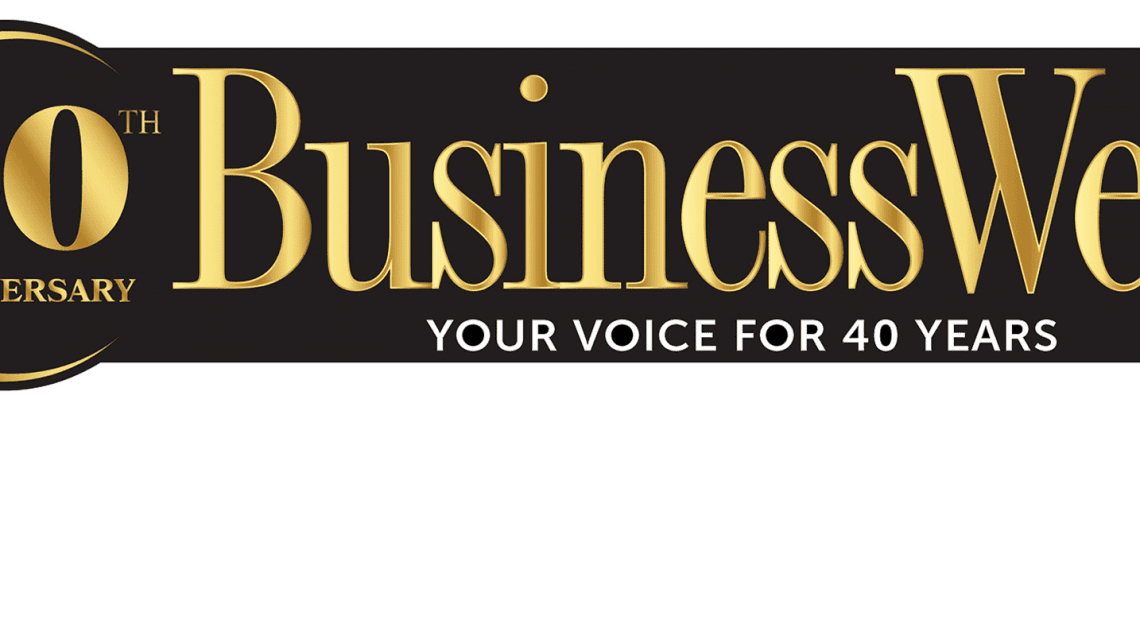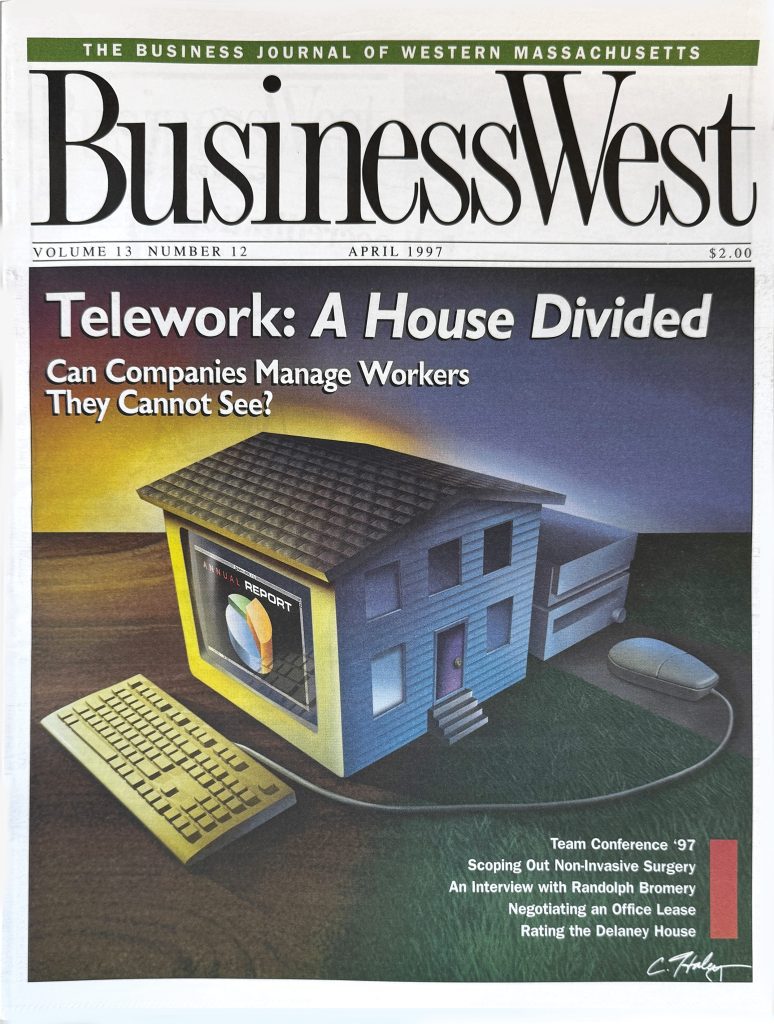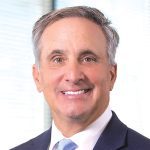
40 Years of the Workplace
The Pendulum Has Shifted — Maybe for Good
 Allison Ebner recalls that, when she first entered the workplace just over 30 years ago, the overriding question still concerned what the employee could do for the employer.
Allison Ebner recalls that, when she first entered the workplace just over 30 years ago, the overriding question still concerned what the employee could do for the employer.
Over the years, and especially over the past decade, the pendulum has certainly shifted to where it’s now more about what the employer can do for the employee.
Indeed, while there have been cycles with the economy and the job market — and, thus, times when the employer and employee have alternated when it comes to having the proverbial upper hand, if you will — the employee has been in control for a while, and will probably remain so for the foreseeable future.
“It’s been flipped on its head, and I don’t think it’s necessarily going to flip back that much moving ahead,” Ebner said. “As employers, we’re constantly trying to figure out ways to retain top talent, and I think that is something we’ll see continuing into the future.”
This is just one of many changes that have come to the workplace over the past four decades, and especially the past four years, as the pandemic created a new paradigm. Others involve everything from how people work and where to dress codes; from technology and the emergence of AI to how to maintain a company culture when people are all together maybe, as in maybe, a day or two a week.
Drew Andrews, managing partner and CEO of the accounting firm Whittlesey, touched on many of these trends and issues as he flashed back almost exactly 40 years to when he started with the firm in June 1984.
“There was one computer in the corner of the office; it was a desktop that no one knew how to use. I was the bright, young kid who came out of college and somehow took a course my senior year on how to use that software, Lotus 1-2-3,” he recalled. “I was the only one who knew how to use it, so they had me start to train people on how to do spreadsheets on it. It was so slow and so ineffective that I can remember partners saying, ‘we’ll never be using this … I can do in 10 minutes what you just did in an hour.’”
Meanwhile, he was doing this work in a three-piece suit. “My first day, it was about 85 degrees out, and I’ve got this suit and tie on, and I’m thinking to myself, ‘why am I doing this?’” he recalled. “I was thinking that I should have taken the summer off and worked at the beach.”
Flash ahead to late last month, and he was doing this interview with BusinessWest via Zoom, from his home, wearing an unbuttoned collared shirt, and marveling at just how much things have changed — not just since he was that kid fresh out of school, but since the start of this decade.
And he’s certainly not alone.
Indeed, one of the common threads running through the stories in this 40th-anniversary issue is the dramatic changes that have come to the workplace in recent years, what they mean, and what might come next.
Allison Ebner
“It’s been flipped on its head, and I don’t think it’s necessarily going to flip back that much moving ahead.”
Many of those we spoke with have been working for three or four decades and referred to themselves as ‘old timers’ or even, in one case, a ‘dinosaur.’
And while some admit to being a bit stubborn when it came to those changes that have come in realms from relaxed dress codes to remote work, in almost every case, reason — driven by many factors, but especially the need to attract and retain talent — has won out over stubbornness.
“I’m a suit kind of guy,” said Tom Senecal, chairman of Holyoke-based PeoplesBank. “And it’s taken me a while, but the pandemic changed things. People wanted to go to casual; I said ‘no,’ but finally acquiesced. Then they wanted jeans on Friday, and I acquiesced. And then they wanted jeans every day, and I acquiesced, and it hasn’t really changed.
“I acquiesced on all of them,” he went on, “because who wants to go work at a stodgy, old-perceived institution versus one that’s flexible? I’m competing against tech companies and insurance companies and financial-services companies. You want to wear jeans? You want to work at home? I have to compete, so I have to acquiesce to what the market is doing.”
Moving forward, Ebner and others are seeing some slight movement toward returning to the office, or at least strong efforts in that direction. What they don’t see is the pendulum (meaning that upper hand) swinging back to the employer any time soon.
Is This Work in Progress?
As he talked about all the changes that have come to the workplace, Andrews put things in poignant perspective when he said he would prefer to visit his firm’s three offices, scattered across Northern Conn. and Western Mass., on Monday or Friday, because there are noticeably fewer people on the road those days courtesy of hybrid work schedules and a desire to be home those days.
His own employees are among those who fall into these categories. “So, if I went on Monday or Friday, I’d be visiting myself,” he said with a laugh.
Drew Andrews
“I was the bright, young kid who came out of college and somehow took a course my senior year on how to use that software, Lotus 1-2-3. I was the only one who knew how to use it, so they had me start to train people on how to do spreadsheets on it.”
So he winds up visiting toward the middle of the week, when people are around — at Whittlesey and most other larger places of business across sectors and jobs in which hybrid schedules are feasible.
And that’s a large list, said Ebner, noting that, while profound changes have come to the workplace since the pandemic arrived in 2020, there were already shifts in those directions years before COVID. The pandemic simply accelerated the process, and on many levels.
Also, the period just after the height of COVID became one of the most competitive in recent memory when it came to talent, the shortage thereof, and the lengths that employers would go to attract talent and then retain it.
“Employers pulled out all the stops to keep their people and attract talent, in terms of raising wages, enhancing benefits, and working on ways to keep their people happy,” she said. “It’s settling down just a little bit; we’re seeing a little bit of a cooling on wages — increases for 2024 were not predicted to be as high as they were in 2023 — and benefits are scaling back, especially in terms of employers sharing the increased cost of healthcare. And some of the other benefits around wellness have gone away.
“We’re trying to find that next normal,” she went on, acknowledging a dislike of the phrase ‘new normal.’ “And we’re still settling into that; we’re trying to find the right balance of productivity expectations for employees versus what we’re offering — the employee value proposition. What does that look like?”
Meanwhile, the workplace has changed in other ways, again mimicking society in many respects.
Today, Ebner said, it’s a less tolerant place than it was years ago, with co-workers becoming seemingly less willing to accept points of view — on a wide of topics — other than their own.
“There’s a lack of respect in our workplaces today for ideas, thoughts, basically anything that someone has that differs from yours,” she explained. “There’s a very confrontational undertone in our workplaces today.
Tom Senecal
“You want to wear jeans? You want to work at home? I have to compete, so I have to acquiesce to what the market is doing.”
“The congenial tone of our workplaces where we were more accepting of people who don’t think and do things like us has really diminished, and it’s causing a lot of chaos for employers trying to manage a respectful workplace,” she went on, adding that this chaos has manifested in everything from microaggressions — stealing coworkers’ lunches and messing with their workstations — to sharp rises in requests at EANE for conflict-resolution training and coaching for people who can’t get along.
Remote Possibilities
Certainly, the biggest change to come to the workplace involves fewer people being in the workplace day in and day out.
We all know what happened. COVID forced most people to work remotely, and over the course of weeks that eventually turned into months, people found they liked it, and they were, by and large, just as productive. And when it came time to go back to the office, many weren’t ready to do so. At least not every day.
Over the past few years, remote work and hybrid schedules have ceased being a perk, if that’s even the right word. They became a demand, or an expectation.
As noted earlier, this was not the first preference for the old timers, who came into a world where everyone worked 9 to 5, or something close, and couldn’t work remotely even if they wanted to, because the technology wasn’t there.
It’s certainly there now, and in recent months, two camps have seemed to develop, at opposite extremes.
“There’s a camp on one side that says everyone has to be in the office, and there’s no remote work, and they don’t want to offer any flexibility. And then, you have the other group that says everyone should be virtual, and if you’re not virtual, you’re not a modern employer,” said Ebner, adding that there is room in the middle and one size (or two) does not fit all.
Meanwhile, many of those who recognize this middle ground still believe something important is missing when people are not in the office, even a few days a week.
Dave Glidden, president and CEO of Middletown, Conn.-based Liberty Bank, said his institution has largely solved the issues involving productivity when it comes to remote work. But he worries about culture and the overall development of younger team members.
“When I came up, I don’t know how many times I sat in the conference room and listened to grizzled veterans talk about problem commercial credits and about how you go to market,” he recalled. “That learning was invaluable to me as I came up, and there are now fewer opportunities for young people coming up to experience that.”
As a result, the bank puts great emphasis on ways to maintain culture when people are not in the office every day, because of its importance to the institution’s overall well-being. Initiatives include everything from professional-development programs to outings where teammates can come together, such as a recent ‘bring your kid to work day’; from food trucks and ice-cream trucks to an all-employee gathering at Mohegan Sun.
“I’ve always said that if a company has no culture, it has no soul, and it takes years to build a good culture,” Glidden told BusinessWest. “But you can lose a culture in minutes or 30 days, you really can.”
Andrews agreed.
“Going back to 1984, my seat was outside the boss’s office; just listening to how he talked to clients … I learned so much,” he recalled. “I was a 21-year-old kid; all I knew how to talk to was other 21-year-old kids. Listening to how that person was interacting with clients and handling situations … I just learned from that.
“I’ve been saying this for a while … we as leaders need to get people back into the office more, and for the right reasons — not just to sit there and talk with people who are remote,” Andrews went on. “We have more fulfilling days when we’re together.”







